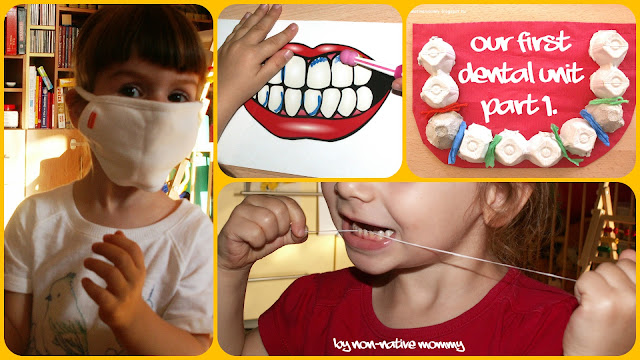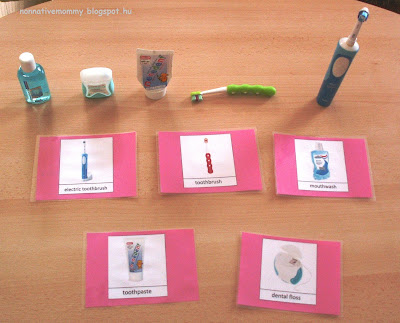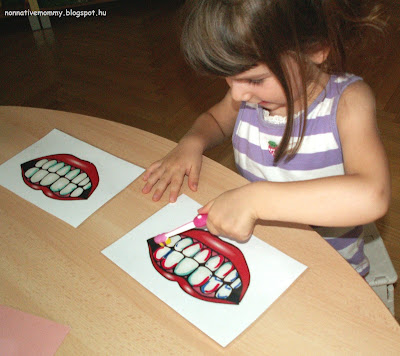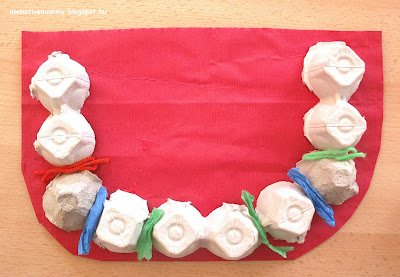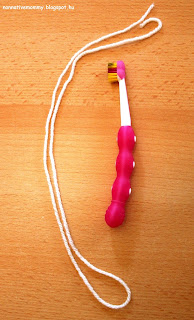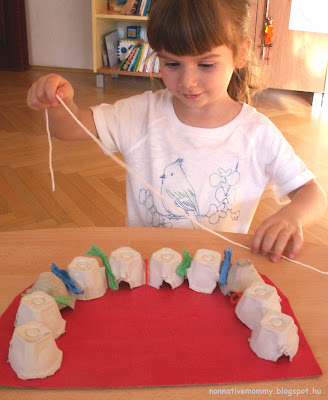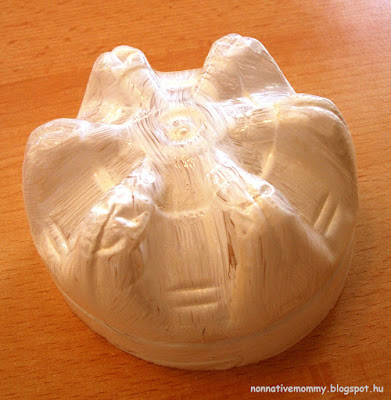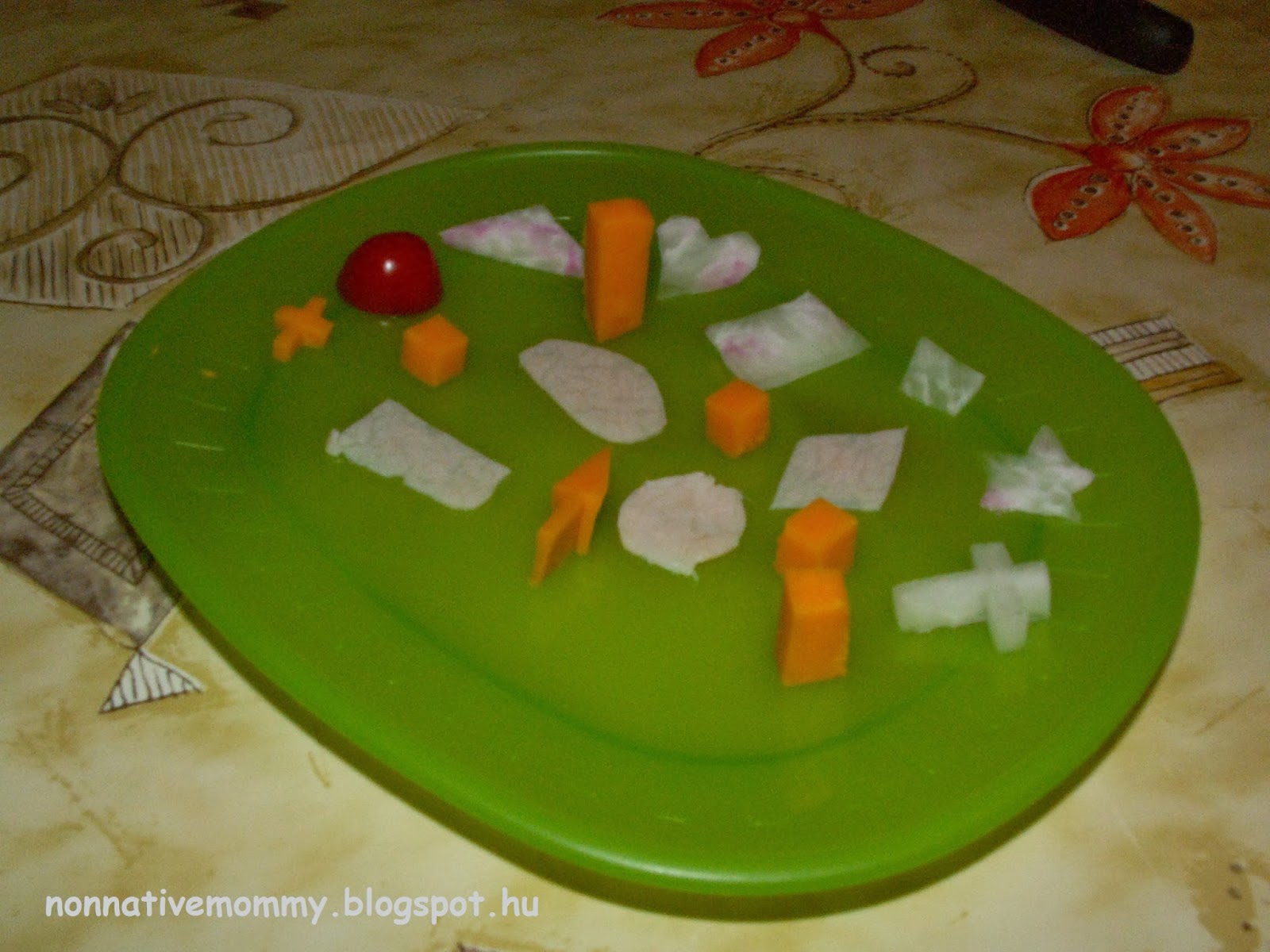E. turned 3 in May so we needed to show her teeth to a dentist. Just a general check-up. How lucky we have a dentistry next door! Visiting the dentist gave me the idea to take a closer look at teeth as a whole project.
1. Flashcards – matching real objects and cards
One afternoon on the way home from the nursery E. asked: – Mommy, did you make a task for me?
I did. This is what was waiting for her:
I prepared some flashcards with everyday objects related to dental health.
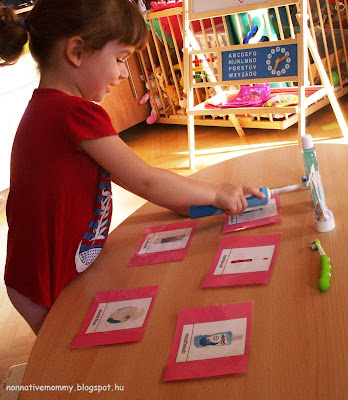 |
|
Electric toothbrush |
She needed to match the objects with the pictures. While she was doing the matching and she didn’t know a tool I named it for her. (Much to my surprise, she remembered dental floss. Once she was watching me flossing)
Then she experienced how to use some of them. (Of course, she knows how to open a toothpaste tube or how to brush with a toothbrush)
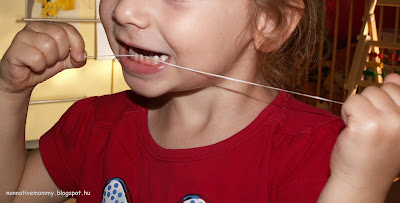 |
|
Flossing |
A new word learnt: vibrating
 |
|
*scream* Mommy! It’s funny… and ticklish |
Smelling the mouthwash
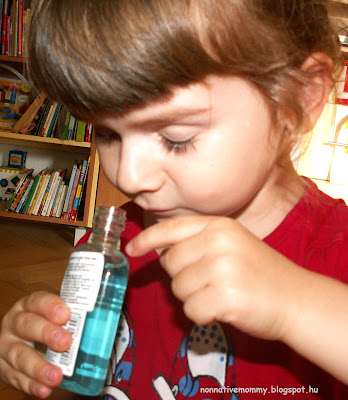 |
|
We don’t drink it, just spit it out |
I asked her to help me pack back all the tools on the bathroom shelf. She refused….
You can find a free printable of the dental health flashcards at the end of this blog post. The printable also includes some dental tools which can be found in a dentistry, such as a mouth mirror, a saliva ejector, explorer etc.
2. Brush, brush, brush
I searched for an image of a mouth (lips and teeth) online, next I printed and laminated it (well, actually 4). With dry erase markers of different colours I created some plaque and germs on the teeth. Earlier I’d save E.’s old toothbrush and she used it to remove the plaque from the teeth. She enjoyed this activity so much for the first time that she’s already done it 4 times since then.
The reason why she is smiling in the next photo is 1. she loves brushing 2. she named the mouth after one of her kindergarten mates and she made up a story around it:
This is L. and she ate M&Ms and now her teeth are dirty. I’ll brush her teeth clean.
Later on, I had to name which little girl or boy’s teeth she needed to brush and what they’d eaten.
Source of this activity: It’s spooky. I’ve found it on pinterest, but now as I’ve just wanted to link the site and it’s gone 😦
3. Egg carton teeth
I took the idea from Sense of Wonder Mom’s Let’s play dentist blog post.
She didn’t describe it in details how to prepare the egg carton teeth so I can share how I made it.
What you need:
- a sheet of red construction paper or cardboard
- an egg box (made of paper and not plastic)
- scissors
- glue and or cello-tape
- coloured crepe paper pieces and/or yarn
- a white yarn piece
- toothbrush
How to make it:
- cut A/4 sized red construction paper and curve two corners – this will be the gum and the tongue
- cut out the dimples (where you otherwise place the eggs) of the egg box (I cut 10 dimples out of 2 different egg boxes as I was creating only the lower jaw but if you’ve got a lot more time than me you can make the upper jaw too then you’ll need 20 i.e 2 egg boxes)
- stick the dimples onto the red sheet in a semi-circle (first I tried cello-tape, then fast-drying liquid glue. The latter worked better. I glued the sides of the egg box dimples and placed them on the paper. To make sure they are firmly stuck on the sheet I put two thicker books on the top. It took 10-12 minutes to dry perfectly.
- wedge the crepe paper pieces and yarn pieces in between the “teeth”
First, E. brushed the sides and the top and I raised her attention to the leftover food pieces between the teeth.
Then she started flossing:
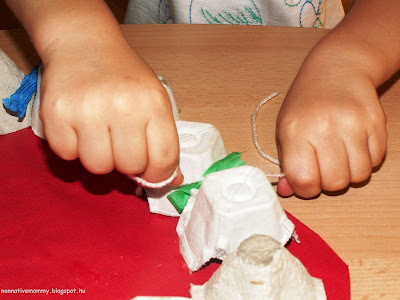 |
|
Look, I can take it out |
We also talked about what happens when you do not brush properly. A cavity appears on the tooth and you need the dentist to fill it in.
So we played dentist:
- I gave her a mask to put on to protect her against the germs
– Mommy, why do you need a mask?
– To keep the germs away from your mouth and from the doctor’s mouth - I took Daddy’s electric screwdriver that magically turned into a dental drill (unfortunately the battery of it was flat. It would have been fun to drill the tooth)
- I gave her bits of tissue paper to fill in the cavity.
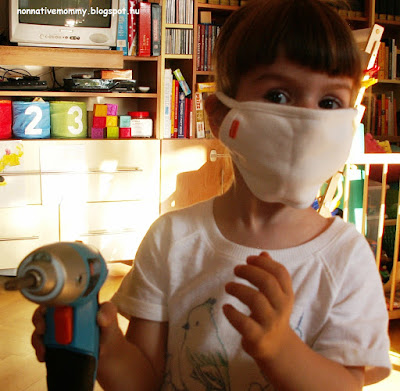 |
|
Little Dentist is ready to work |
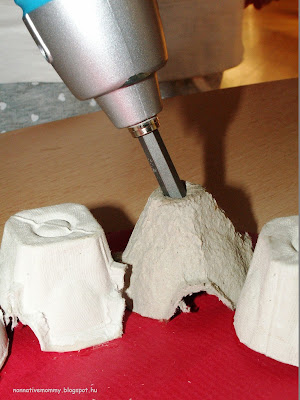 |
|
Drilling the cavity |
 |
|
filling the hole |
She drilled and filled in two teeth then she got annoyed with the mask…
4. Brushing movement on a big molar
I made a big molar out of a plastic bottle. I cut off the bottom of it and painted it white. I provided E. with her old toothbrush and she started to brush it. (The idea comes from the same link above)
I told (and showed) her how to brush
- the sides back and forth
- the top with a circular movement (round and round)
- the inside with a sweeping movement (sweep sweep)
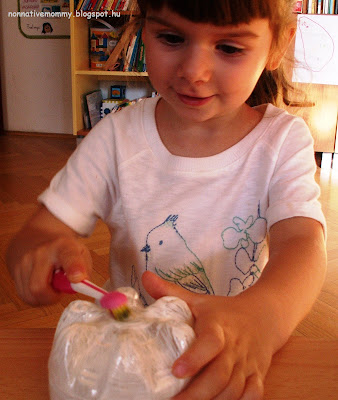 |
|
Round and round, back and forth, sweep-sweep |
She enjoyed these tasks a lot. So much she wanted to do them several times.
– Mommy, can I brush the teeth again?
– Draw some germs on the teeth.
– I want to floss.


